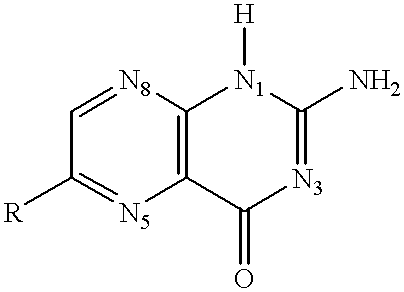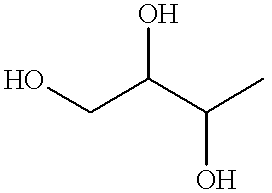Ricin inhibitors and methods for use thereof
a technology of ricin and inhibitors, applied in the field of ricin inhibitors, can solve the problems of affecting the synthesis of proteins, affecting the effect of bacterial growth, and difficult control of outbreaks,
- Summary
- Abstract
- Description
- Claims
- Application Information
AI Technical Summary
Problems solved by technology
Method used
Image
Examples
example 2
Crystallography And Molecular Modeling
Crystals of RTA were grown in the monoclinic form (see Robertus et al., J. Biol. Chem. 262:19-20 (1987); and Mlsna et al., Prot. Sci. 2:429-35 (1993)) or in a tetragonal form (Weston et al., J. Mol. Biol. 244:410-22 (1994)). Three-dimensional diffraction data were collected on a San Diego Multiwire Systems area detector (see Hamlin, Methods in Enzymology 114:416-52 (1985)) with a Rigaku RU-200 X-ray source operating at 50 kV, 110 mA with a graphite monochromator. Data was collected using the method of Xuong et al., J. Appl. Cryst. 18:342-50 (1985), and reduced and evaluated using the University of California, San Diego (UCSD) software system (Howard et al., Methods in Enzymology 114:453-72 (1985)). Rotation and translation searches, as well as crystallographic refinement of the RTA inhibitor complex (energy minimization and simulated annealing), were carried out using the X-PLOR package (Brunger, Crystallographic refinement by simulated annealin...
example 3
According to the ab initio minimization, the hybridization of an amino N atom connected to an aromatic ring is variable depending on its environment. Table 1 lists the deviation from the ring plane of two hydrogens on such N atoms. It shows that some N atoms are sp2 types, and some are combinations of sp2 and sp3 types. If the deviation sum from the aromatic plane is larger than 30 degrees, the N atom was dealt with as sp3 type in the molecular mechanics calculation.
In the energy minimization protocol, the energies for the crystal complexes of ricin with FMP (Monzingo, and Robertus, J. Mol. Biol. 227:1136-45 (1992)) and pteroic acid were minimized first. Next, these structures were reminimized after FMP and pteroic acid were replaced by formycin and pterin. Then the formycin or pterin was replaced by other structures one by one. The newly-formed complexes also were fully minimized by the criteria mentioned above for obtaining the interaction energies between ricin...
example 4
Identification Of Pteroic Acid As An Inhibitor
A query was constructed using the geometric and bonding parameters of the observed FMP ligand, and a search of the NCI data base was made with CHEMX. Among the compounds predicted to have hydrogen bond donors and acceptors in an orientation favorable for RTA interaction was the pterin derivative called pteroic acid (PTA). SYBYL calculations suggested that PTA might bind better than FMP. Interaction enthalpies, calculated assuming one negative charge on each ligand, were -106 Kcal / mole for pteroic acid, as compared with -89 Kcal / mole for FMP. It is important to note that the interaction enthalpies do not consider such terms as configurational entropy nor the effect of solvent interactions, and thus are not meant to represent the free energy of binding the ligand to the protein. Rather, the calculation is intended to serve as a rough guide to comparing the likely affinities of related compounds for the target enzyme.
To determine if pteroic...
PUM
| Property | Measurement | Unit |
|---|---|---|
| pH | aaaaa | aaaaa |
| volume | aaaaa | aaaaa |
| pH | aaaaa | aaaaa |
Abstract
Description
Claims
Application Information
 Login to View More
Login to View More - R&D
- Intellectual Property
- Life Sciences
- Materials
- Tech Scout
- Unparalleled Data Quality
- Higher Quality Content
- 60% Fewer Hallucinations
Browse by: Latest US Patents, China's latest patents, Technical Efficacy Thesaurus, Application Domain, Technology Topic, Popular Technical Reports.
© 2025 PatSnap. All rights reserved.Legal|Privacy policy|Modern Slavery Act Transparency Statement|Sitemap|About US| Contact US: help@patsnap.com



